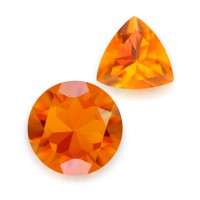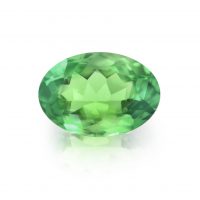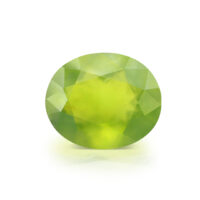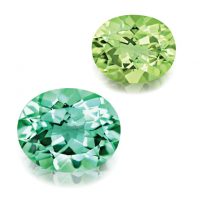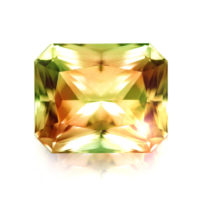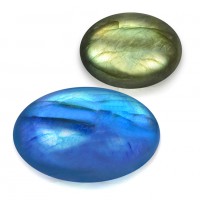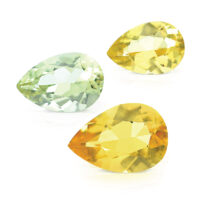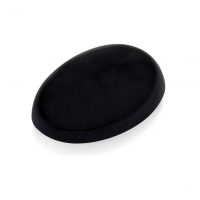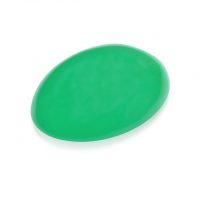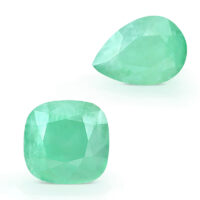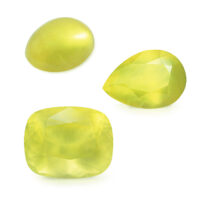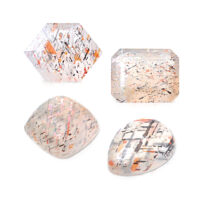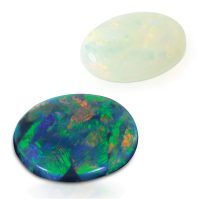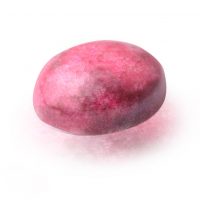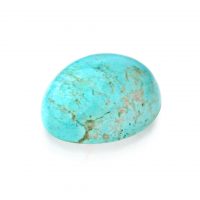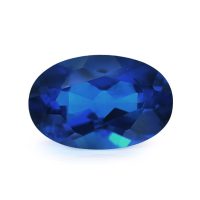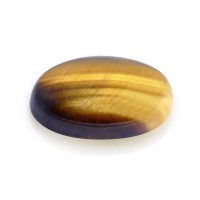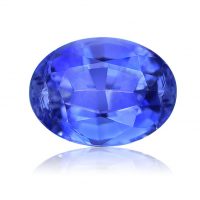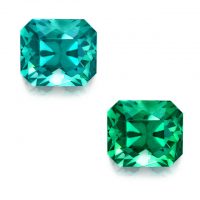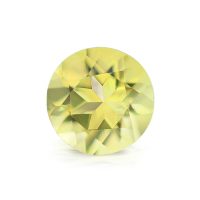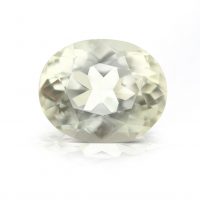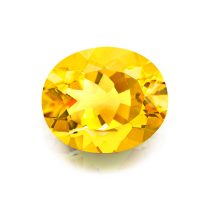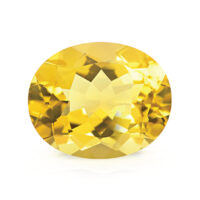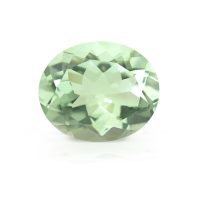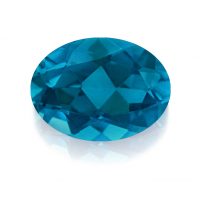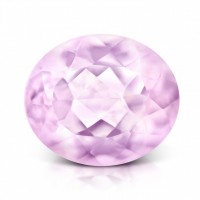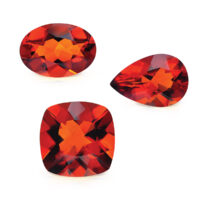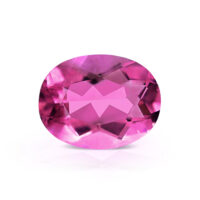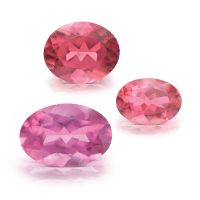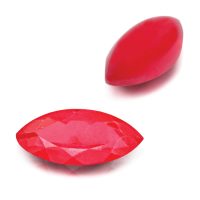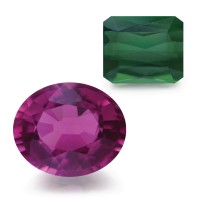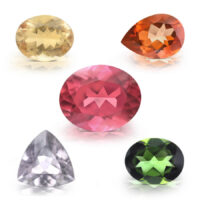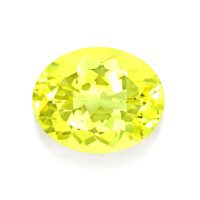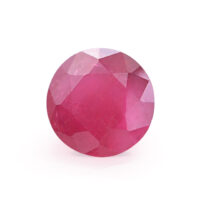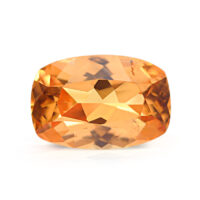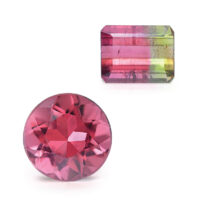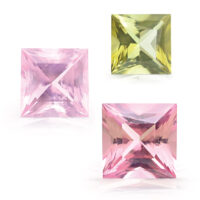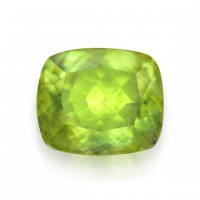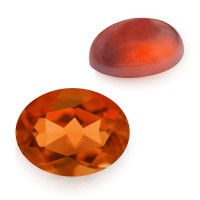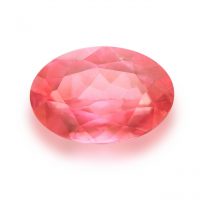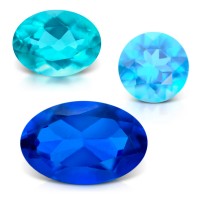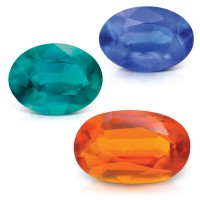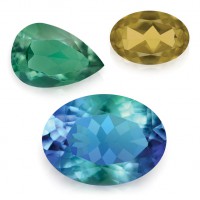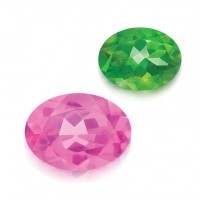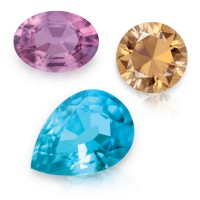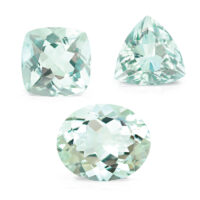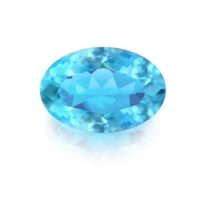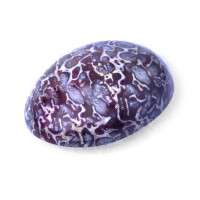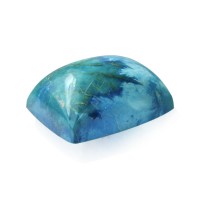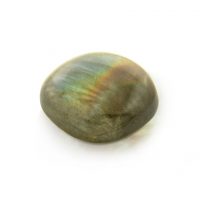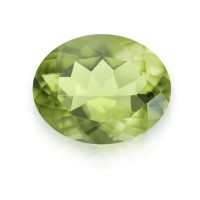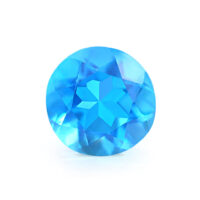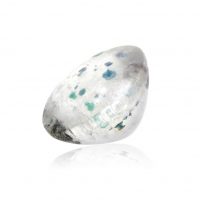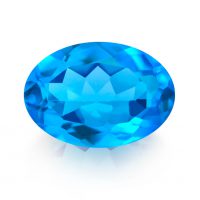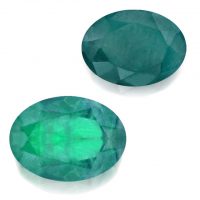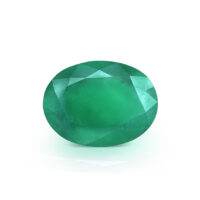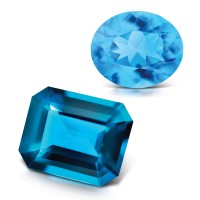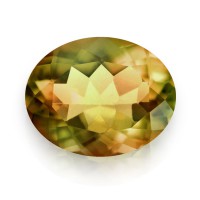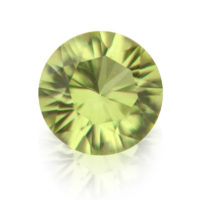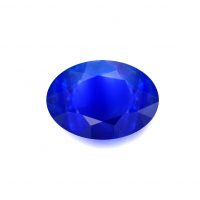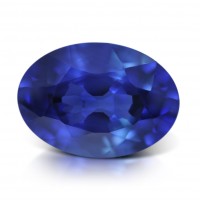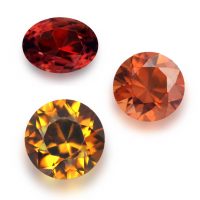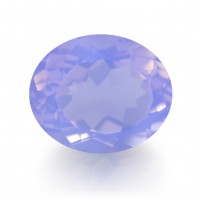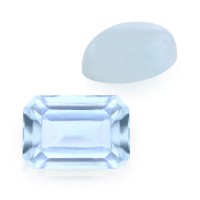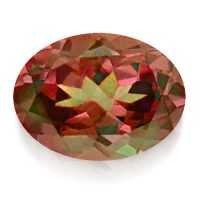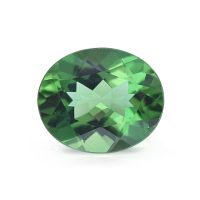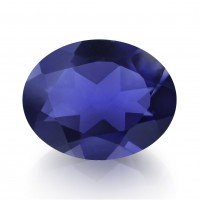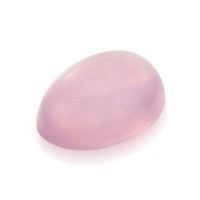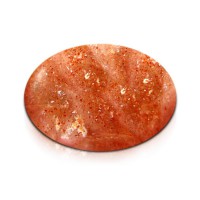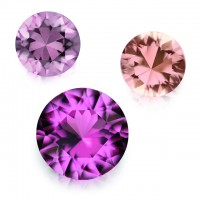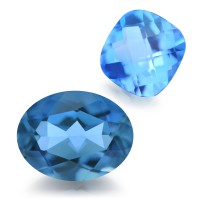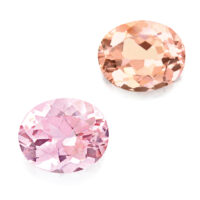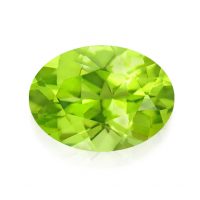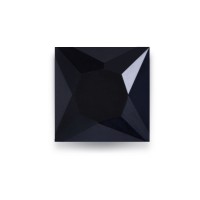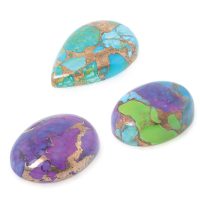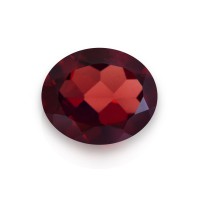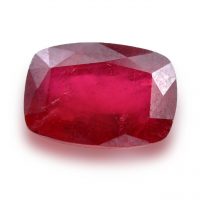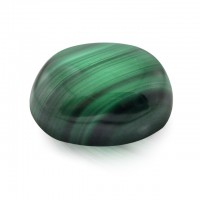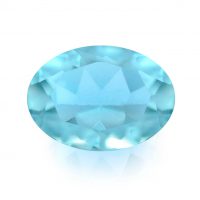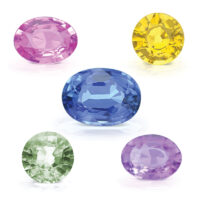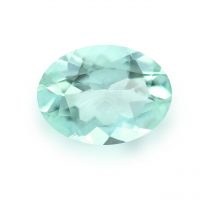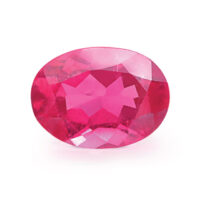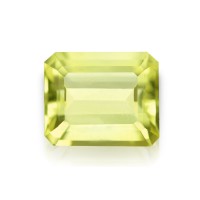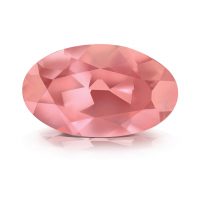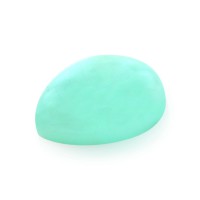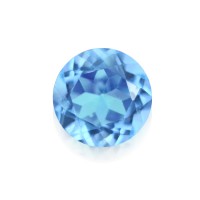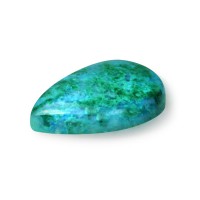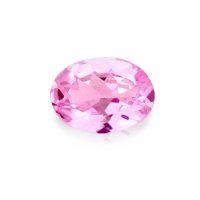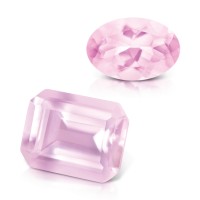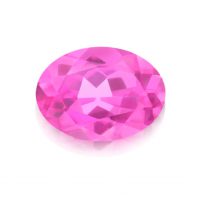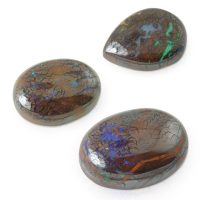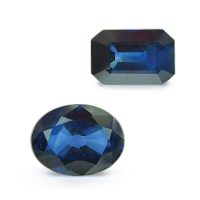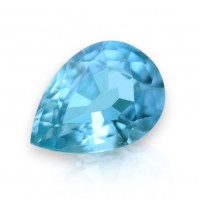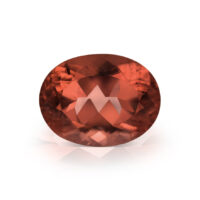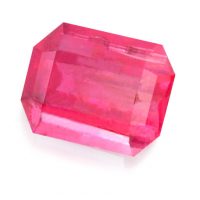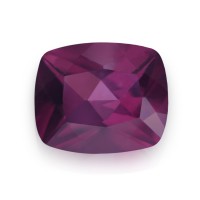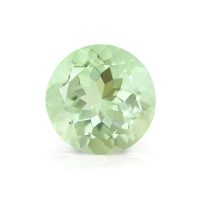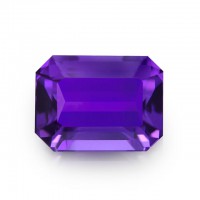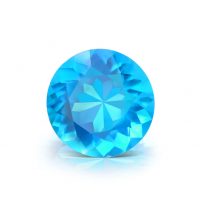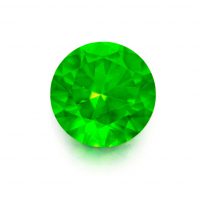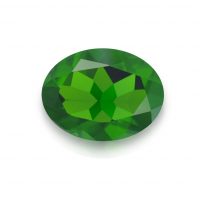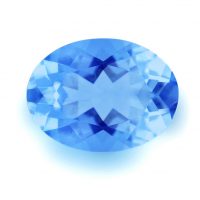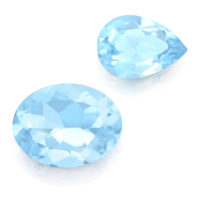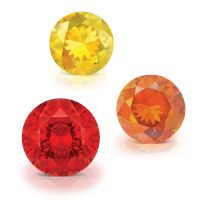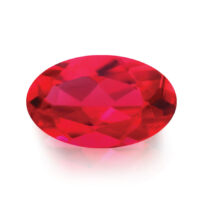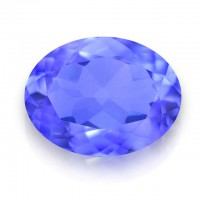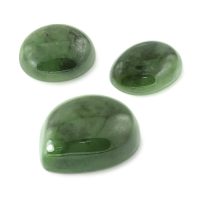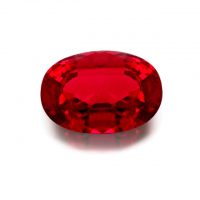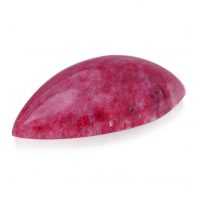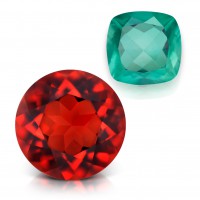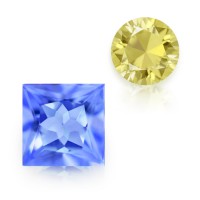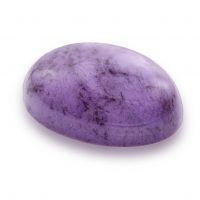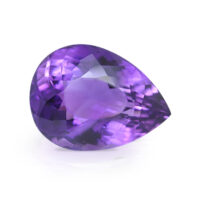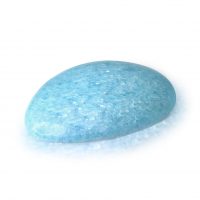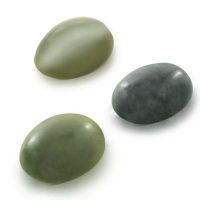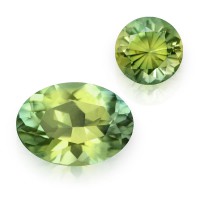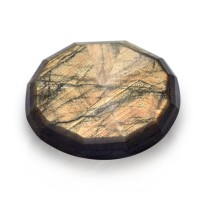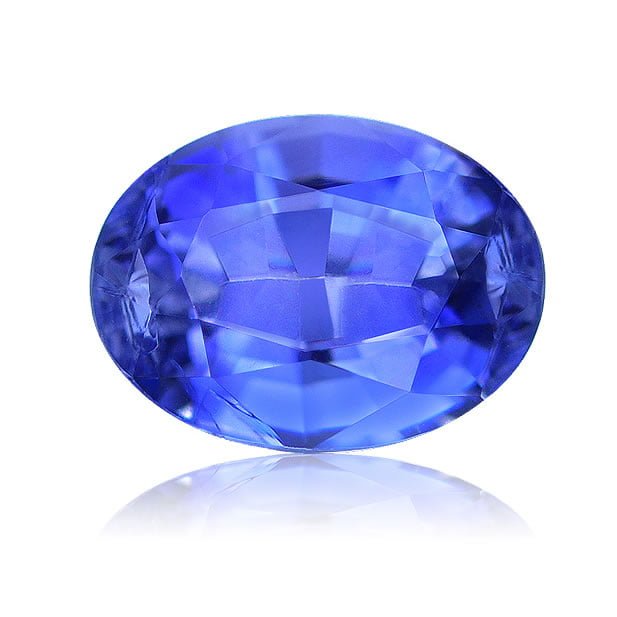

Exclusively sourced from California’s San Benito County, for which it is named, Benitoite’s fine ‘sapphire-esque’ blues coupled with its rarity, has made this scarce, exotic and virtually unknown gemstone, restricted it to the lucky few. With limited Benitoite crystals approaching gem-quality, most fine specimens are zealously guarded by mineral collectors and never faceted. Due to tremendous scarcity coupled with its ostensible depletion in 2005, Benitoite is extremely expensive, making it rarely seen in gemstone, jewelry and mineral collections. Since the supply of Benitoite is very limited and demand high, Benitoite will only further increase in price in years to come, making it a prized addition to the collections of any serious gemstone connoisseur.
Hardness 6 – 6.5
Refractive Index 1.757 – 1.804
Relative Density 3.65
Enhancement None
Beauty
Extremely beautiful, Benitoite has an appearance very similar to Sapphire due to its intense blues and pleochroism (different colors displayed in different directions). It is also wonderfully brilliant due to a high refractive index and a dispersion (fire) greater than Diamond or Sapphire, which sometimes allows the gem to twinkle with green and red flashes.
While optimal lapidary is important for Benitoite, in terms of value, cutting is an afterthought; lapidaries will facet the largest gems possible due to their small size and scarcity. As a result, windows (areas of washed out color in a table-up gem, often due to a shallow pavilion) and less than optimal proportions are more common in Benitoite than in other gemstones. Benitoite has been cut as brilliants and ovals, with crystals with color variations or inclusions cut ‘en cabochon’ (cut in convex form and highly polished, but not faceted). While the brilliant cut showcases the brilliance and fire of the gem, the step cut accentuates Benitoite’s color with only a slight loss of brilliance. As its small crystals show strong blue/colorless dichroism the lapidary must correctly orientate the crystal to obtain the best blue, which unfortunately results in smaller gems. A choice also needs to be made between dispersion and body color. While some lapidaries will forgo the dispersive display for a darker blue, others prefer a lighter blue with more evident dispersion.
As usual, clarity enhances value in Benitoite, especially when eye-clean, the highest clarity quality grade for colored gemstones. Rich blue, eye-clean gems a carat and over command the highest prices, with very light and very dark examples priced accordingly. Due to Benitoite’s rarity and popularity with collectors, any clarity, color, or size, will find a ready buyer.
Benitoite was discovered in 1907 by prospector James M. Couch in the San Benito Mountains roughly halfway between San Francisco and Los Angeles. Couch originally thought he had discovered Sapphire due to its color. In 1909, a sample was sent to the University of California, Berkeley where mineralogist Dr. George D. Louderback realized it was a previously unknown mineral. He named it ‘Benitoite’ for its occurrence near the headwaters of the San Benito River in San Benito County, California, USA. In 1985 Benitoite was named the official state gem of California. Forming in low temperature, high pressure environments, Benitoite is an extremely rare blue barium titanium cyclosilicate, found in hydrothermally altered serpentine. Typically color zoned, Benitoite comes in various shades of blue to white and, occasionally, colorless or pinkish. Benitoite usually fluoresces under shortwave ultraviolet light, appearing bright blue to bluish white in color. The rarer colorless or white Benitoite crystals fluoresce red under long-wave ultraviolet light. Benitoite typically occurs with an unusual set of minerals that make up its host rock. These include albite, joaquinite, natrolite, neptunite, and serpentine.
Rarity
While tiny amounts of Benitoite have been found at other locations in California, as well Arkansas, Australia, Czech Republic, Japan, Montana, and Romania, gem-quality Benitoite is exclusively from California’s San Benito County. Benitoite are among the world’s rarest, most desirable, and most expensive gemstones, ranking eight on the top ten list of the world’s rarest and most valuable gems (Painite1, Alexandrite2, Taaffeite3, Jadeite4, Red Beryl5, Black Opal6, Grandidierite7, Benitoite8, Tanzanite9, and Poudretteite10), and ‘9’ on Forbes’ list of the ‘12 Most Expensive Gemstones in The World’.
Eighty nine percent of Benitoite gems are under 1 carat, nine percent between 1 – 2 carats, and only 2 percent are over 2 carats. From the time of the its discovery in 1907 until 1967, it is estimated that about 2,500 carats of faceted Benitoite were unearthed. Of that amount, nearly 1,000 carats were produced during the period of active mining between 1907 and 1911. Few stones exceeded 3 carats, and most of the gems weighed less than 1 carat. One thousand five hundred carats were recovered between 1911 and 1967. From 1968 to 1997, approximately 2,000 carats of faceted Benitoite were extracted. This output can be divided into six weight classes: 1. About 2,000 pieces were cut in commercial factories, and generally finished to gems weighing less than 0.25 carats; 2. Another 1,500 gems range between 0.25 – 1 carats; 3. Approximately 500 gems weigh between 1 – 2 carats; 4. A total of 50 gems range between 2 – 3 carats; 5. Only 25 gems weigh 3 – 4 carats; and 6. The 15 largest gems ever mined exceed 4 carats. All but the commercially cut gems were faceted by the families of the current owners or at their own lapidaries, and they typically do not market cuttable crystals aside from mineral specimens. This low output compared to other gemstones demonstrates the extreme scarcity of Benitoite.
The Benitoite Gem Mine is in the southeastern part of San Benito County, near the Fresno County line. The mine is about 56 kilometers by road northwest of Coalinga in the Diablo Range and is 1,463 meters above sea level. When word got out of this new gemstone discovery, several people, including the famous George F. Kunz from Tiffany’s of New York, rushed to the site to secure an exclusive marketing agreement. Unfortunately for George, Mr. G. Eacret, of Shreve and Company in San Francisco ultimately won the marketing rights. The mine owner, Mr. R.W. Dallas, built a mine camp and immediately expanded mining operations. The mine produced Benitoite from an open cut in the hillside, as well as a short underground tunnel pushed into an outcrop of Benitoite-bearing material called blueschist. For about 5 years, the blueschist layer yielded thousands of excellent gemstones. In 1912, the market for Benitoite weakened and, experiencing a difficult financial situation, Mr. Dallas closed the mine. The mine was re-opened briefly in 1933, and additional gems were discovered.
Between 1933 and 1967, the Dallas family leased the mine to various individuals. During the 1940’s, Mr. M. Hotchkiss used a bulldozer to enlarge the open cuts at the top of the hill. Between 1952 and 1967, Mr. C. Cole used a bulldozer and dynamite to continue the open cut work. Very little gem material was produced during this period. In 1967, two new serious collectors came to the scene. Elvis ‘Buzz’ Grey and Bill Forrest were able to secure a lease on the Benitoite deposit. Grey and Forrest eventually purchased the mine from the Dallas family in 1987. From 1987 to 1999, the property was dramatically expanded, tested and mined. During this period the size of the deposit was more accurately determined and new gem resources discovered with excellent gemstones and mineral specimens extracted. The flurry of activity during the 80’s and 90’s attracted the attention of larger mining concerns including Kennecott Corporation and AZCO Mining, Inc. Both companies drilled, sampled and studied the property for its gemstone potential. The first detailed geologic picture of the mine was formulated through this work. Hundreds of feet of diamond drilling and dozens of test pits proved the existence of commercial gemstone reserves. The Benitoite Gem Mine was referred to as the ‘Dallas Mine’ until the mid-1960s, but it has been variously called the ‘Benitoite Mine’, ‘Dallas Benitoite Mine’, and the ‘Dallas Gem Mine’. In 2000, the property was purchased by Benitoite Mining, Inc. (BMI), a company affiliated with Collector’s Edge Minerals, Inc., headquartered in Golden, Colorado. BMI operated a processing plant that separated the gemstones from the mine’s alluvial material.
BMI operated the mine until 2004, selling it in 2005 to Dave Schreiner of Coalinga, California. Prior to 2004 BMI ran the old mine dump and alluvial material through the processing plant, also extracting all the known host rock material. BMI then rehabilitated the site, including covering the ponds, putting the top soil back in place and re-seeding, as well as pulling the roads back to contour. The result was a site that looked much like it did before mining took place.
While the current owner can extract a limited amount of host rock, this must be transported to another location where collectors can pay to try their luck finding gems and mineral specimens. Since this results in miniscule output, most acknowledge that the world’s only source of gem-quality Benitoite ostensibly ceased production in 2005. Benitoite is also totally natural and unenhanced, which further accentuates its extreme rarity.
Durability & Care
Benitoite (Mohs’ Hardness: 6 – 6.5) is an excellent choice for everyday jewelry. Benitoite should always be stored carefully to avoid scuffs and scratches. Clean with gentle soap and lukewarm water, scrubbing behind the gem with a very soft toothbrush as necessary. After cleaning, pat dry with a soft towel or chamois cloth.
Map Location
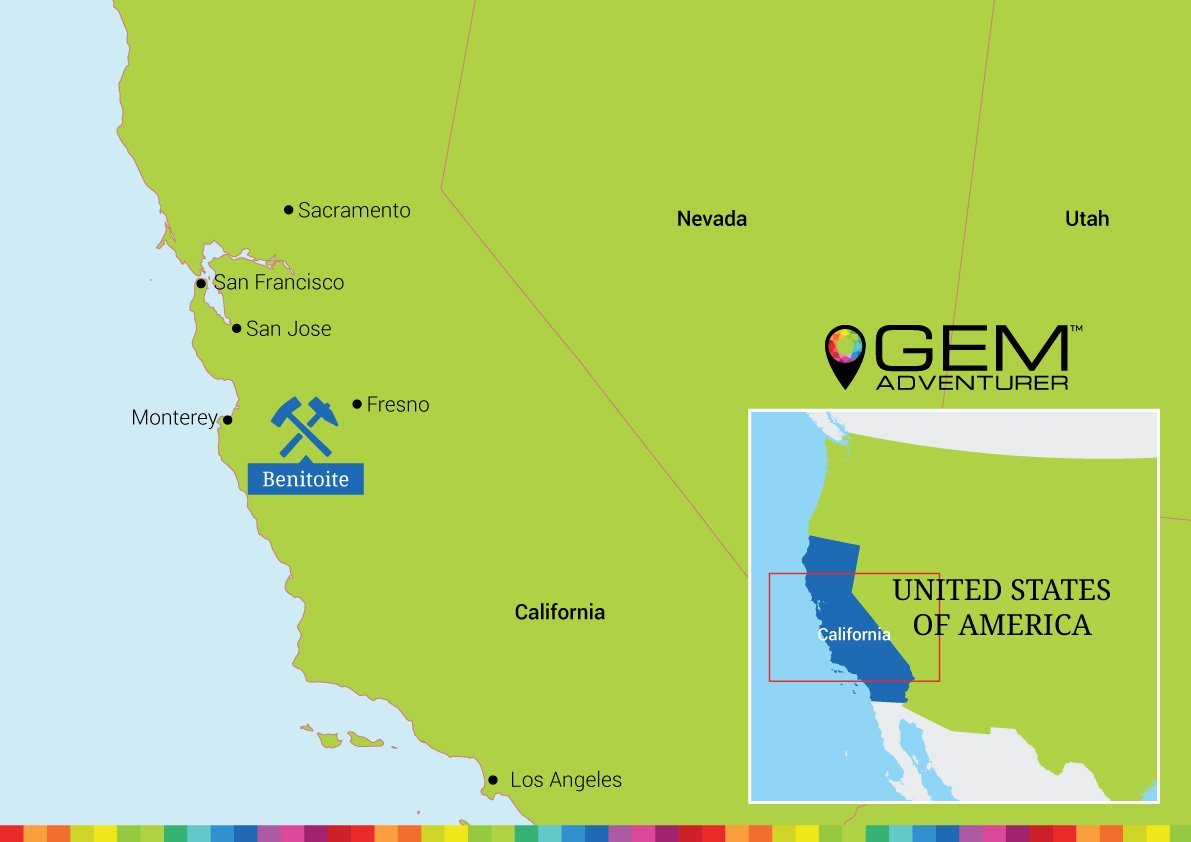
Click map to enlarge
